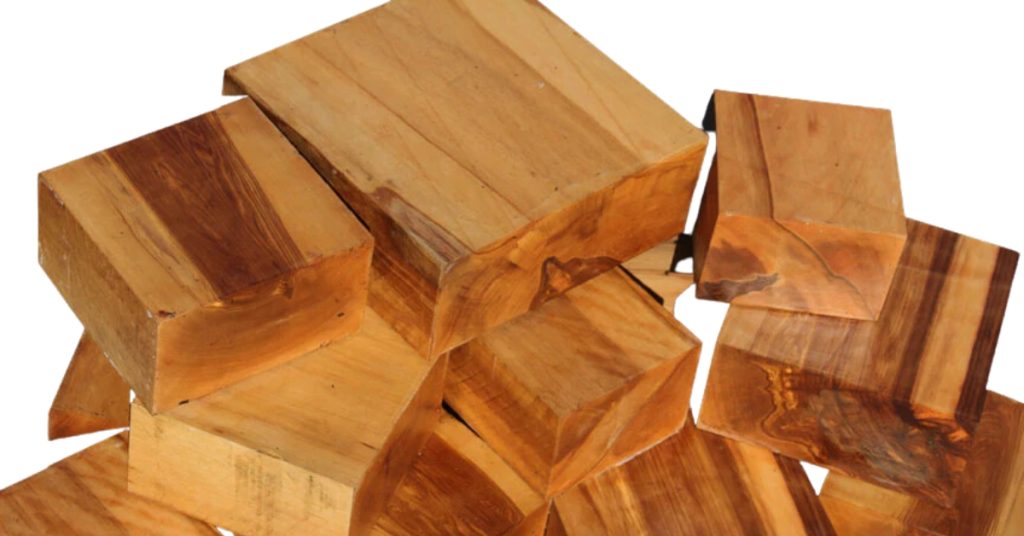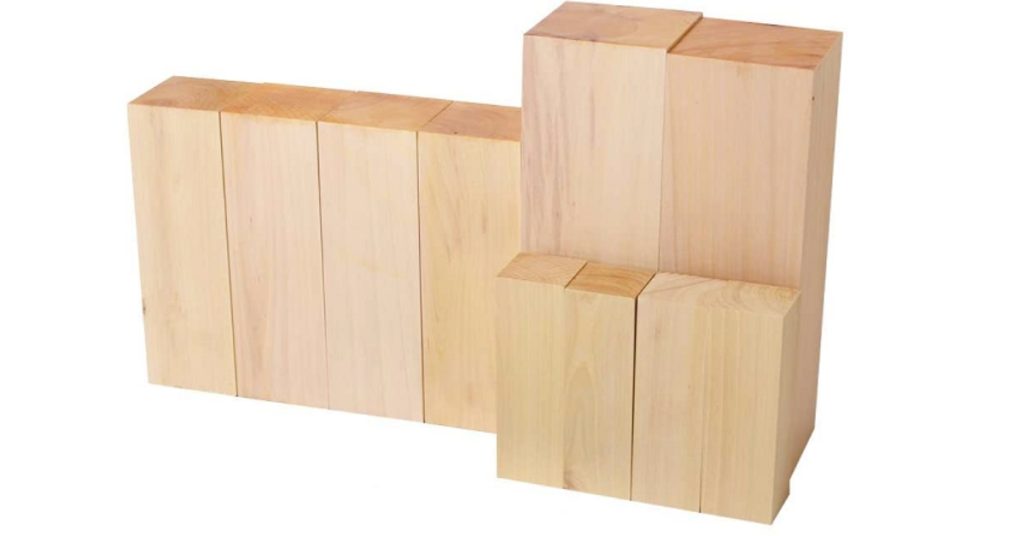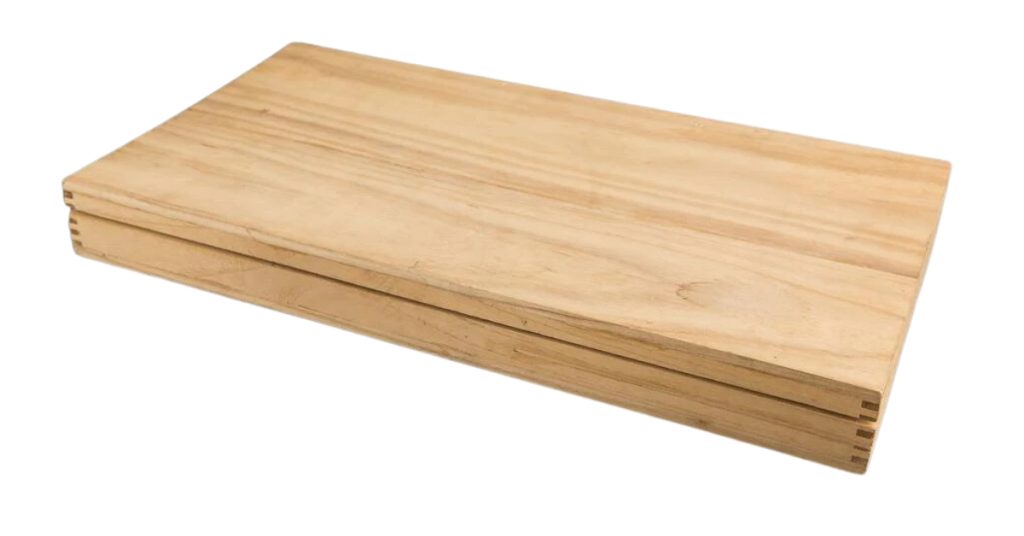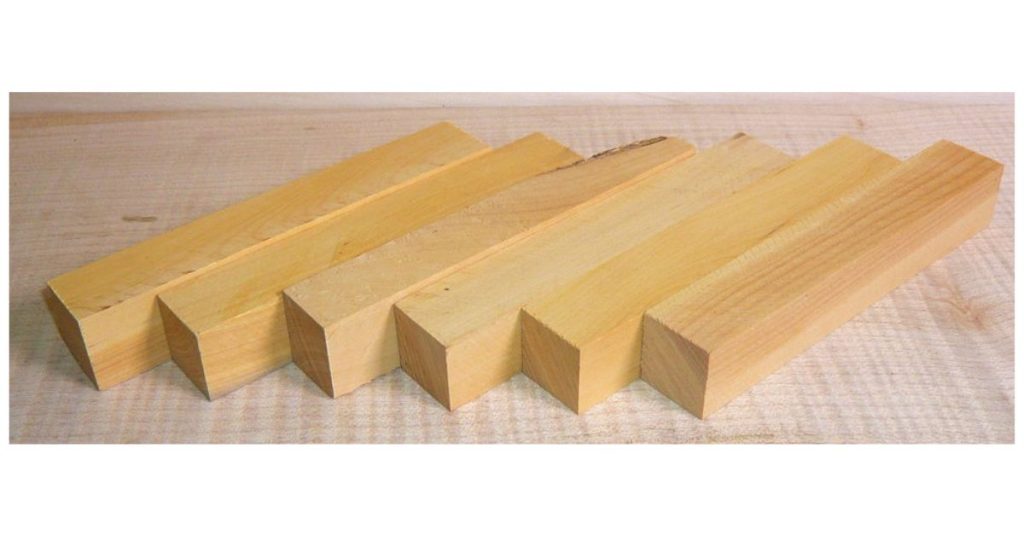Boxwood Vs. Other Hardwoods: Which Wood Is Best For High-Quality Furniture?

When it comes to crafting high-quality furniture, the choice of wood is essential. Whether you’re a seasoned craftsman or an aspiring woodworker, selecting between boxwood and other hardwoods can be a difficult decision. But don’t worry – in this article, I’m here to help!
I’ve been working with wood for over 10 years now, and I have extensive experience when it comes to choosing the right kind of wood for any project. When comparing boxwood vs. other hardwoods, several factors must be taken into consideration: weight, texture, grain pattern, hardness, and durability. Each type of wood has its unique advantages and disadvantages which will determine how suitable it is for your particular project.
In this article, we’ll explore all these factors in depth so you can confidently decide which type of wood is best suited for making high-quality furniture pieces. We’ll discuss why some woods may not be ideal for certain applications and provide tips on how to select the perfect piece of wooden material for your next craftsmanship endeavor.
Definition Of Boxwood
Boxwood is a beautiful and classic hardwood, often used for crafting high-quality furniture. It has captivating properties that make it stand out among other wood types. Let’s explore the definition of boxwood, its identification, characteristics, and description in more detail.
When discussing boxwood, we’re referring to a slow-growing evergreen shrub or small tree, found mostly in Asia and Europe. The tree or plant grows slowly with thick leaves which have smooth edges – this makes it an ideal candidate for carving intricate designs into its surface or using as veneers on furniture pieces. Boxwood is highly valued for being rot-resistant and durable; making it perfect for use outdoors as well as indoors.
A few key things to look for when identifying boxwood include the light tan color of the sapwood and the darker brown heartwood with occasional streaks of purple or red running throughout it. Additionally, due to their density, boxwoods are heavier than most other woods you may come across while shopping or browsing furniture items made from hardwoods. As far as texture goes, you should expect fine even grain patterns all over any piece of furniture crafted from boxwood!
In terms of longevity, boxwoods hold up incredibly well against wear and tear due to their ability to resist insects better than many other hardwoods. This means your investment will last much longer if properly sealed and taken care of – so take note! All these qualities combined make boxwood one of the best materials available when looking for quality furniture that can withstand time’s test.
Description Of Other Hardwoods
Now that we understand what boxwood is, let’s look at some of the other hardwoods used for furniture making.
Teak wood is a popular option due to its durability and unique coloration; it can last up to seventy years with proper care.
Mahogany is another well-known choice that has dark reddish brown tones along with a tight grain pattern.
Walnut offers a more subtle hue than mahogany but still features an attractive grain pattern. Maple may not be as strong or durable as teak or walnut, but it has a beautiful creamy white color which makes it perfect for certain pieces of furniture.
Lastly, oak wood has long been favored among craftsmen thanks to its strength and light golden coloring.
All these woods have their advantages and disadvantages when compared to boxwood, so you’ll need to weigh your options carefully before deciding which one will work best for your next project.
Strength And Durability Of Boxwood

When it comes to choosing the best wood for high-quality furniture, boxwood is an excellent choice. This hardwood has remarkable strength and durability that makes it a top pick among professional craftsmen and furniture makers. Its unique qualities make boxwood ideal for creating beautiful pieces of furniture that will last for generations.
Boxwood’s strength and durability are due in part to its tight grain pattern which resists splitting or cracking under pressure. It also features a fine texture that creates an attractive finish when polished or stained. Boxwood is known for being extremely durable, making it perfect for long-lasting furniture pieces withstanding years of wear and tear.
In terms of longevity, boxwood is considered one of the most reliable woods available on the market today. Unlike some other types of hardwoods, boxwood retains its structural integrity over time even when subjected to harsh environmental conditions such as extreme temperatures or humidity levels. This means that you can trust your investment in boxwood furniture to stand up against the test of time without having to worry about repairs down the line.
The advantage of using boxwood for furniture is its aesthetic appeal. With its smooth surface, subtle colors, and timeless design elements, this type of wood adds elegance and sophistication to any space while maintaining a traditional look that never goes out of style. Whether you’re looking for something classic or modern, boxwood can provide just what you need to create an impressive piece of quality furniture that you’ll be proud to show off in your home or office.
Strength And Durability Of Other Hardwoods
When it comes to furniture-making, other hardwoods provide a great alternative for those who want high-quality pieces. While boxwood is strong and durable, some woods can also offer these qualities in spades. Maple, oak, cherry, and walnut are all popular options among furniture makers because they boast impressive strength and durability.
These hardwoods have a tight grain structure which makes them difficult to dent or scratch – perfect for the wear and tear of daily use. They’re also incredibly dense and heavy, meaning they won’t warp over time with exposure to water or humidity. This ensures your furniture will retain its shape even after years of use.
Thanks to their superior strength and density, these harder woods require more work when being crafted into furniture pieces; however, this results in much higher quality end products than softer woods like pine or cedar. The edges are smoother while the joints remain tighter due to the extra effort put into crafting each piece by hand.
The beauty of these hardwoods cannot be denied either; maple has an attractive pale cream color that looks stunning when polished while oak offers up deep browns that look classic no matter how you style them. Cherry wood has a reddish hue that works well with traditional decor styles while walnut provides a rich dark brown that pairs nicely with modern designs. No matter what type of aesthetic you’re going for, one of these four kinds of wood can help create the perfect atmosphere in any room.
So if you’re looking for something timeless and elegant yet capable enough to last through generations of family members using it – consider investing in high-quality furniture made from one of these four hardwoods: maple, oak, cherry, or walnut!
Weight Considerations For Boxwood

Boxwood is a lightweight hardwood that’s often used for furniture. Its light weight makes it ideal for creating intricate designs and decorative details in furniture pieces. The lighter the wood, the easier it is to manipulate and shape into desired shapes. But its lightweight also brings with it some challenges when crafting high-quality furniture pieces.
When making boxwood furniture, one of the first considerations should be how much weight the piece can bear without warping or cracking. Boxwood can handle more weight than other woods due to its density, so it’s important to take this into account when deciding on what type of furniture to make out of boxwood. Furniture makers must consider whether they are using solid wood pieces or veneers and if there will be any additional stress placed on the piece such as heavy items being stored on top.
The second factor to consider when making boxwood furniture is how easy it is to work with compared to other hardwoods. Working with boxwood requires extra care because it is softer than most woods; hand tools may need sharpening more often than usual during construction and finishing processes. Additionally, dust particles from sanding can quickly fill up voids within the grain pattern which could cause problems later down the line if not removed properly before staining or sealing finishes are applied.
Finally, working with boxwood requires patience since it’s significantly slower than many other types of hardwoods when cutting, drilling, or routing projects due to its softness and relative lack of strength compared to denser species like maple or oak. Despite these challenges though, skilled craftsmen know that taking their time and paying close attention while working with boxwood results in beautiful pieces that last a lifetime!
Weight Considerations For Other Hardwoods
When it comes to selecting the best wood for high-quality furniture, boxwood isn’t the only option. Other hardwoods also have their unique characteristics and benefits that should be taken into consideration. Let’s explore some of these weight considerations for other hardwoods when compared with boxwood:
- Hardwood Weight Comparison
Generally speaking, most other hardwoods are heavier than boxwood due to the denser grain patterns in them. This can make them more difficult to work with than softer woods like pine or cedar but they offer greater stability and durability in return. - Wood Weight Considerations
Depending on what type of furniture you’re looking to produce, different types of hardwoods will weigh differently. For instance, oak is a heavier wood while maple is lighter in comparison. It all depends on how much weight your piece needs to support and which type of hardwood appeals most aesthetically. - Furniture Weight Considerations
Keep in mind that if you’ve chosen a harder wood for your furniture project then its overall weight will likely increase as well; this could cause issues depending on where you plan on placing it and whether or not the surface can handle the additional load. Additionally, solid pieces tend to be heavier than hollow ones so opt for an open design if lightness is desired.
Ultimately, other hardwoods such as oak, cherry, walnut, and mahogany are great options for quality furniture making due to their strength and attractive qualities. They may require extra caution during production since they are generally heavier than the common boxwood but with proper planning, any potential risks can be avoided allowing your finished product to truly stand out from the rest!
Temperature Resistance Of Boxwood

If you’re looking for a wood that can handle the ups and downs of temperature, then boxwood is your go-to! Whether it be blazing hot or icy cold, this hardy material will never let you down. Not only does it have high heat resistance, but its cold tolerance is unrivaled by other woods used in furniture making. You won’t find any warping or cracking when exposed to these extremes – just beautiful craftsmanship that stands the test of time.
But don’t take my word for it – there are plenty of scientific studies that back up how great boxwood is. Tests were conducted on various species of boxwood and all showed impressive results regarding their temperature stability. The wood was subjected to extreme temperatures (both hot and cold) over extended periods with no ill effects reported whatsoever! This makes it one of the best choices if you’re looking for something long-lasting yet still aesthetically pleasing.
The key lies in the fact that boxwood has an incredibly low coefficient of thermal expansion (CTE). This means that even when exposed to varying temperatures, its shape remains relatively unchanged; unlike many other kinds of wood which tend to expand or contract significantly under different conditions. So if you want a piece of furniture made from materials that won’t warp or crack due to changing temperatures, look no further than boxwood!
It should come as no surprise why so many craftsmen choose this particular variety when constructing high-quality pieces: its proven track record speaks for itself. The combination of durability, beauty, and temperature resistance make it an unbeatable choice for those wanting something special without having to worry about upkeep costs down the line. Boxwood truly is top-notch stuff – no wonder folks keep coming back for more!
Temperature Resistance Of Other Hardwoods
Now that we’ve discussed temperature resistance in boxwood, let’s take a look at other hardwoods and how they compare. There are many factors to consider when choosing the best wood for high-quality furniture. Temperature resistance is just one of them, but it can be an important factor depending on the environment where your furniture will be placed.
When looking into the temperature resistance of different hardwoods, there are some key features you should evaluate:
- Durability: How well does the wood stand up against extreme temperatures? Is it more likely to crack or warp?
- Appearance: Does the wood retain its color over time even with exposure to sunlight? Are any stains fading quickly or becoming discolored?
- Cost: What is the cost of purchasing this type of wood compared to others? Is it worth investing in a higher-quality material if it may last longer and require less maintenance down the road?
In terms of durability and appearance, oak is often considered one of the strongest options when it comes to temperature resistance. It has low shrinkage rates meaning it won’t warp easily and its natural texture allows for beautiful designs without needing too much staining or finishing work. Maple also stands out as being very durable while still having a pleasant light coloring that looks great in both modern and traditional settings. Walnut is another popular choice due to its dark hue which gives off an air of sophistication along with its ability to withstand fluctuating temperatures without warping or cracking. In general, these three kinds of wood offer excellent value for their temperature-resistant properties.
For those who need something lighter than walnut but don’t mind sacrificing a bit of strength, cherry might be a good option. Its rich reddish-brown tones make it visually appealing but unfortunately Cherry isn’t quite as strong as Oak or Maple so extra care must be taken if you’re placing furniture in areas prone to drastic changes in temperature. Of course, no matter what kind of wood you choose certain precautions should always be taken such as using protective sealants and ensuring proper ventilation around pieces made from any hardwood species.
Temperature resistance varies greatly between different types of hardwoods so researching each species before making a purchase is essential for finding the best material for your project needs — especially when creating high-quality furniture intended to last for years!
Cost Comparison Between Types Of Wood
When it comes to cost comparison between wood types, boxwood is one of the most expensive hardwoods used for furniture. It’s also one of the hardest and most durable woods available, making it ideal for high-quality pieces that can last a lifetime. However, other hardwoods may be more budget-friendly but still offer great strength and durability.
Oak is often considered an economical option when compared with boxwood because it’s widely available and less costly than some of the other exotic options like teak or mahogany. Oak is strong enough for almost any piece of furniture you might need, plus its grain pattern adds visual interest to your finished product.
For those who don’t want to spend too much on their furniture but still want a good quality item, maple is another great choice. Maple has very tight grains which give it a smooth finish once sanded down, and it’s slightly softer than oak so it won’t have as many dents or scratches from daily use. Plus, maple will provide plenty of stability to keep your furniture looking nice even after years of use.
The type of wood chosen should depend largely on how much you’re willing to spend on your new furniture. If money isn’t an issue then boxwood would be the way to go since it offers unparalleled strength and longevity at a premium price point. But if budget is important then oak or maple are both viable alternatives that will provide excellent results without breaking the bank.
Impact On Furniture Design
When it comes to furniture design, the right wood selection is key. Boxwood and other hardwoods can make all the difference in a piece of furniture’s overall aesthetic. While boxwood has traditionally been used for more ornate pieces because of its fine grain and smooth finish, many other hardwoods offer excellent durability and craftsmanship as well. All types of wood have unique characteristics that must be taken into consideration when selecting a material for high-quality furniture.
The type of wood chosen will determine the style, shape, and character of the finished product. Hardwoods such as walnut or cherry boast strong grains with bold colors, while softer woods like pine feature lighter tones with fewer knots and blemishes. Each type offers something different to the look and feel of any project; however, boxwood remains one of the most popular choices among experienced craftsmen due to its superior strength and ability to hold intricate details in place better than other materials.
In addition to aesthetics, the wood selection also affects how each piece wears over time. With boxwood furniture, you can expect an extremely durable surface that won’t scratch easily but still maintains its beautiful appearance even after years of use. Other hardwoods may require additional sanding or refinishing from time to time to maintain their original luster. In comparison, softwoods tend to dent more easily but often provide projects with a rustic charm not found in harder varieties.
No matter which type is chosen for a particular job, careful attention should always be given to proper finishing techniques so that your investment stands up against everyday wear and tear without showing signs of age too quickly. From traditional methods like staining or oiling to modern sealants available on today’s market, there are plenty of options available for adding protection while preserving natural beauty at the same time – an important factor in creating high-quality furniture that lasts generations instead of just seasons.
Maintenance Requirements For Each Wood Type
When it comes to working with wood, maintenance is key. Knowing the proper care instructions for each type of wood can help ensure that your furniture will look great and last a long time. Boxwood and other hardwoods have different maintenance requirements, so let’s take a closer look at what upkeep is needed for each one.
Boxwood furniture requires regular dusting and wiping down with a slightly damp cloth to keep its beautiful appearance. You should also apply wax or oil every few months to protect the surface from scratches and scuffs. It’s important not to use any harsh chemicals on boxwood as this could damage the finish of the wood.
Other hardwoods like oak and cherry require more frequent cleaning than boxwood does; you’ll need to vacuum them regularly, followed by wiping them down with a soft cloth. To prevent watermarks or fading, avoid using too much liquid when cleaning these woods – just enough to get rid of dirt particles should be sufficient. Once again, wax or oil should be applied periodically depending on how often the furniture is used.
It’s essential to always read up on specific care instructions before attempting to clean any wooden surface, regardless of whether it’s made out of boxwood or another hardwood material. Taking good care of your furniture ensures that it remains to look its best – after all, nothing beats having beautifully crafted pieces that stand the test of time!
When it comes to high-quality furniture, boxwood, and other hardwoods both have their pros and cons. For those looking for affordability and low maintenance costs, then boxwood is the way to go. On the other hand, if you’re searching for wood with more sustainability benefits, then other hardwoods will be your best bet.
Design-wise, when working with either boxwood or other hardwoods there are a few things to keep in mind. Boxwood has an elegance that many find attractive while still providing durability compared to its counterparts. Other hardwoods provide a more traditional look that can easily blend into any home décor style.
Choosing between boxwood and other hardwoods isn’t always easy but by taking cost, environmental factors, safety considerations, and design choices into account one could make an informed decision on which wood is right for them – like picking out the perfect diamond ring from a jewelry store window; each cut of wood holds its unique beauty!
